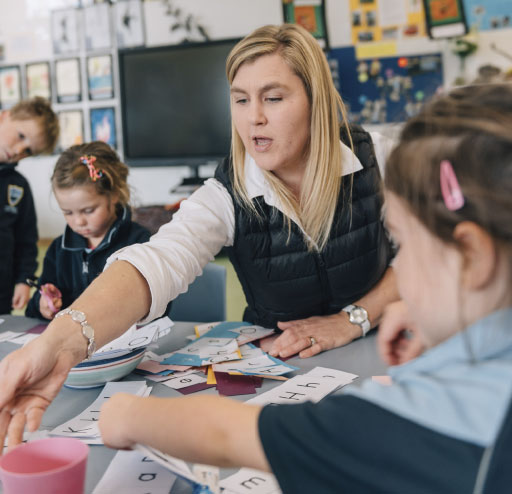Download a printable copy of this article (PDF 527KB)

- Look to balance firmness and fairness at all times.
- The 3:1 Rule has merit.
- The best relationships include constructive feedback experiences.
- Teachers CAN smile before Easter.
- A focus on the positive without ignoring an area for improvement is key.
I firmly remember many things from my first year or two of teaching. Some are a lot fuzzier. But a memory I have from very early on was being told by one experienced staff member not to be too nice. “Huh?” I muttered, thinking that this wasn’t mentioned in my four years at university. “You know” he went on, “don’t let them walk all over you.”
A lot of do-gooders will tell you that you have to be nice to the kids and allow them to express themselves. Well, I’m here to tell you that the only thing you have to do is show them who’s in charge. That’s Teaching 101 as far as I’m concerned.” It is likely you’ve heard advice along those lines and many of us have heard and grappled with the well-worn phrase, “don’t smile before Easter.”
Welcome to teaching!
I remember the fog of confusion I was in as I walked to my classroom. I had been ready to be very nice and super positive. I was about to walk in as educational Pollyanna and create my own little classroom of happiness. Yet, here was an experienced practitioner telling me this was bad policy. Was I right? Was he right? Or was there a way that we both might have a point?
“It is important to stay positive, because beauty comes from the inside out.”
– Jenn Proske
The short story is that I survived that year mostly by being a nice guy. I was occasionally bad tempered and occasionally chose the wrong practices and strategies. Show me a graduate teacher who hasn’t! It was a fabulous year of learning and I hope it was for my students too.
What I later discovered was that I was right to look for a hybrid model; that a balance of firm and fair in my practice was a desirable endeavour and that my reflection would best be geared towards the most effective balance quotient. Enter Marcial Losada.
Losada, with the assistance of renowned psychologist Barbara Fredrickson, looked hard at the way human beings interact. He looked at the positive interactions and their impact – and he looked at the negative. He also counted them and compared the ratios of positive to negative interactions against the perceived and actual function or dysfunction of the relationships within which they occurred. What Losada came up with was the right ratio … or the balance between firm and fair that I’d been looking for.
It turns out that one negative interaction to every 2.9013 positive interactions can take a relationship out of a languishing state and into a flourishing state. As with most statistically valid research the real challenge is what to do with it.
So let’s consider the Losada Ratio more practically, on a bell curve where we round the desired ratio to 3 to 1.
It seems that when it comes to the question of how nice we need to be to make our classrooms work, we have found the answer! The contextualising of Losada’s work in your classroom might be the critical factor in effectively leveraging functional relationships for better student performance.
Where a ratio of around three positives per negative is achieved the relationship is the most functional. It’s conducive to learning, safety and can be leveraged by the teacher for improved student performance.

Where there is around one negative for every positive, the relationship is in dysfunction. The student will feel you are picking on them incessantly.
Where there is around one negative for every six positive, the relationship is also in dysfunction. The student feels no challenge to improve! This is irritating and undesirable.
References
Barbara Frederickson explains “The Positivity Ratio”
Bibliography: YouTube. (2019). Barbara Fredrickson: The Positivity Ratio. [online]
Available at: https://www.youtube.com/watch?v=_hFzxfQpLjM










